As a UXPin education partner, the Interaction Design Foundation provides one of the most robust collections of online courses and free encyclopedias.
Since the UXPin audience gets 25% off their first year of membership, we decided to take a look inside some of their courses and materials. For full transparency, we don’t earn any affiliate revenue from the discount – we just wanted to share a useful resource for working designers.
Who is the IDF?
Founded in 2002, the Interaction Design Foundation is a nonprofit educational institution based based in Denmark. Their founders are Mads Soegaard and Rikke Friis Dam, who both hail from an education background.
Their executive board features well-known design leaders like Don Norman, Bill Buxton, and Irene Au (one of our advisors as well). Individual designers also manage chapters of the IDF by continent and country.

Their goal is to democratize UX education with open-source academic courses taught by experienced practitioners and university professors.
In short, they’re both an online community of designers and an online course provider.
What do they offer?
The IDF hosts 4 full-length encyclopedias and 30+ self-paced courses. The encyclopedias are free for everyone. Paying members ($112.50 for first year for UXPin audience) can take as many courses as they’d like.
Encyclopedias
Given their length and academic feel, it’d be inaccurate to call these ebooks or even guides. The 4 encyclopedias offered by the IDF are true full-length publications. The encyclopedias also feature video interviews (in some cases, they’ve flown out on location to meet the experts).
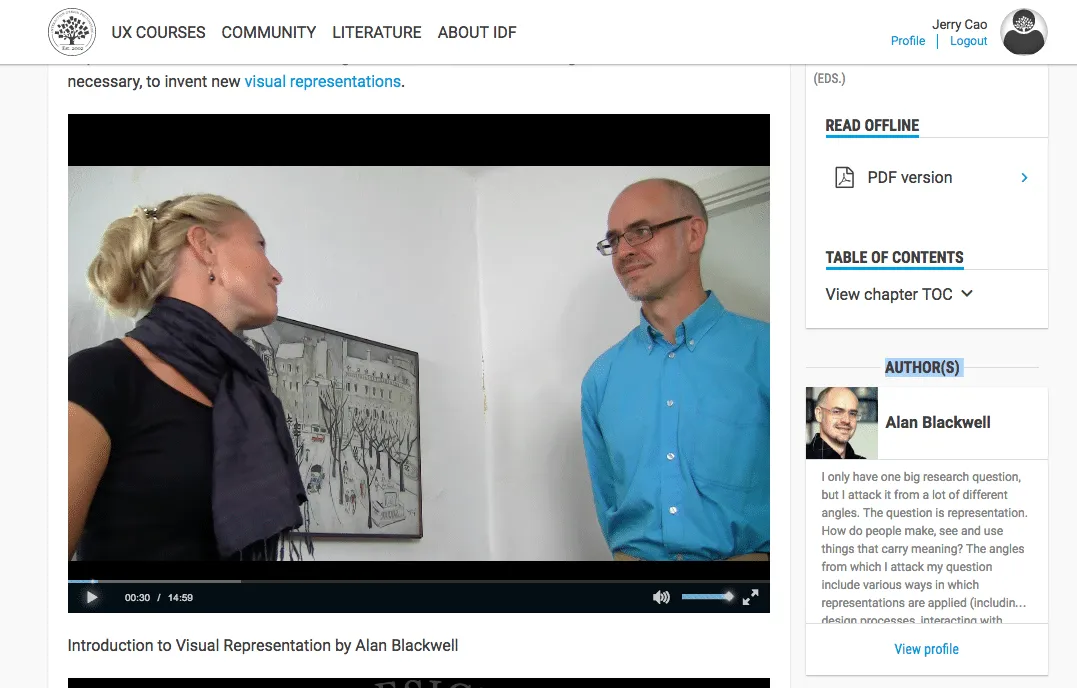
As someone who’s worked on quite a few 150+ page ebooks at UXPin, even I was impressed by the depth of the material and author expertise. Their Encyclopedia of Interaction Design (2nd edition) clocks in at over 4,000+ pages with 100+ designer authors.
The best part is that they’re available for free online or in PDF format.
Given that many successful designers are self-taught, I can see these open-source textbooks as a great resource for staying updated. They are a bit theoretical, but it certainly doesn’t hurt to supplement mileage with knowledge.
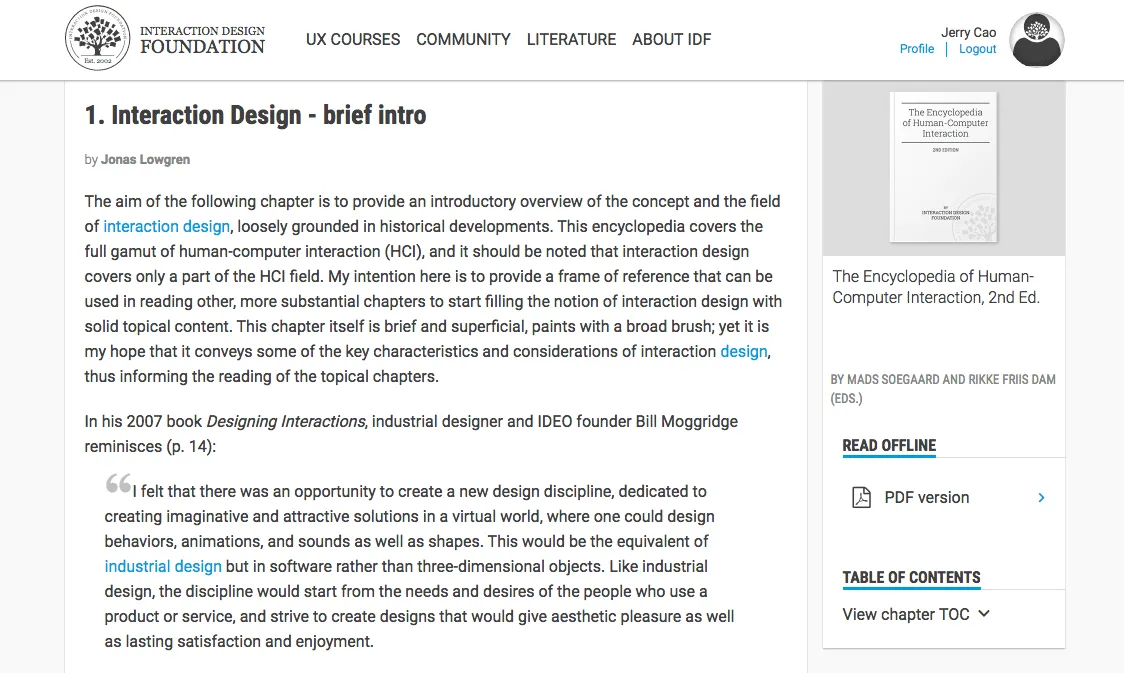
Here’s all 4 of their free encyclopedias:
- The Encyclopedia of HCI (2nd Edition)
- The Social Design of Technical Systems (2nd Edition)
- Gamification at Work: Designing Engaging Business Software
Ecourses
The courses are categorized for beginners, intermediate, and advanced users. Each course is self-paced and offered in regular intervals. I found enrollment to be pretty straightforward – choose the course you want, book it, then get a calendar reminder for when it starts.
In my case, I enrolled in a beginner-level HCI class to get a feel for the pacing and material, but you can see they also offer focused advanced courses.
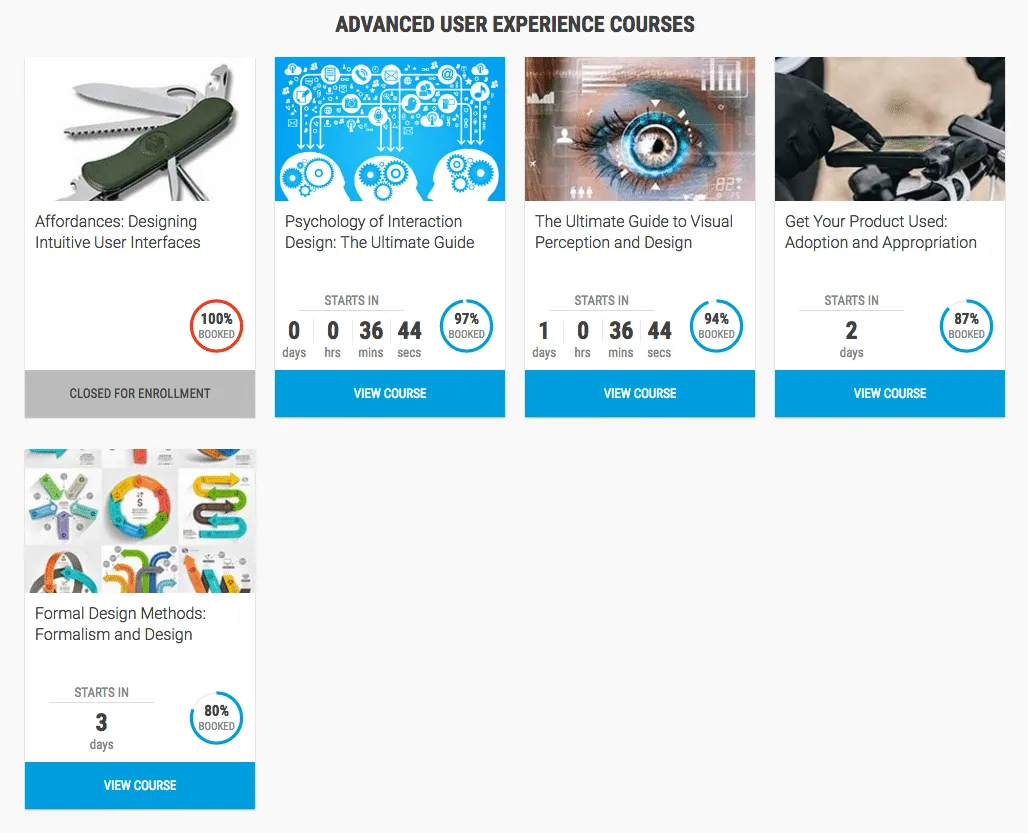
How do the ecourses work?
After setting my information in the initial course onboarding, I was ready to dive into the materials for the Beginner’s HCI Course.
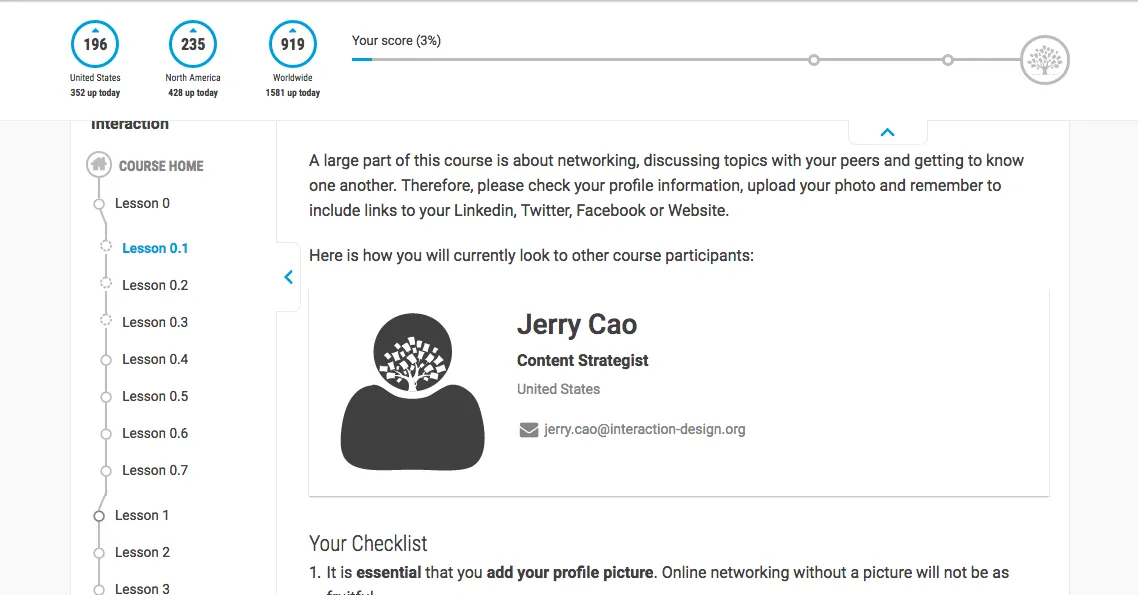
Each of the 9 lessons breaks down into sub-lessons, which include a video followed by a quick question. I thought the instructor Alan Dix (well-known HCI expert and author) was quite clear and passionate in explaining the sub-lessons.
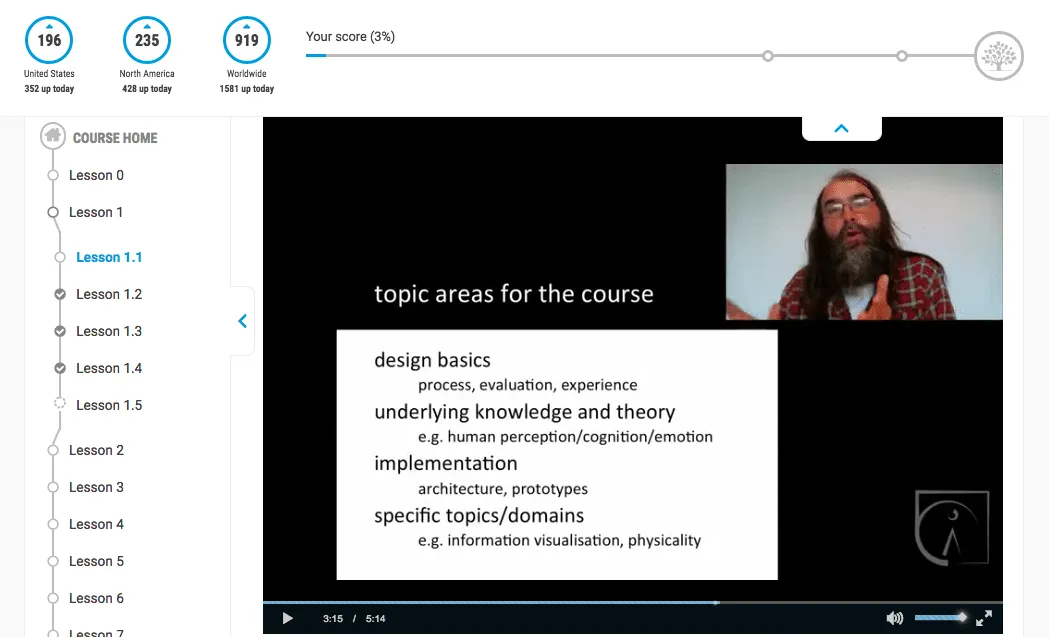
At the end of each lesson, you’re presented with an opportunity to participate in a group discussion with peers. You can also join a local IDF group for in-person study sessions and networking. In my case, I found a local chapter for the San Francisco region.
It’s definitely a nice touch that helps to eliminate the overwhelming feeling of tackling a course all by yourself.
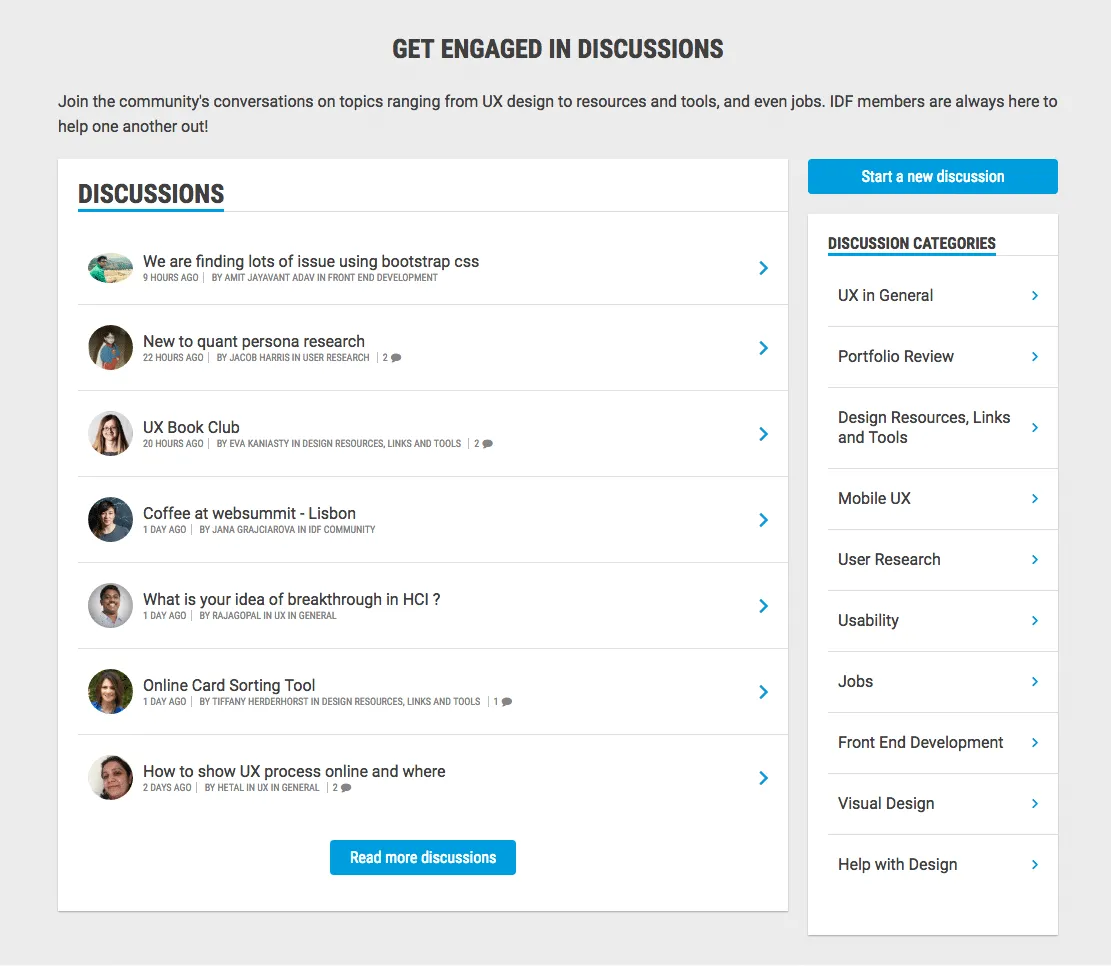
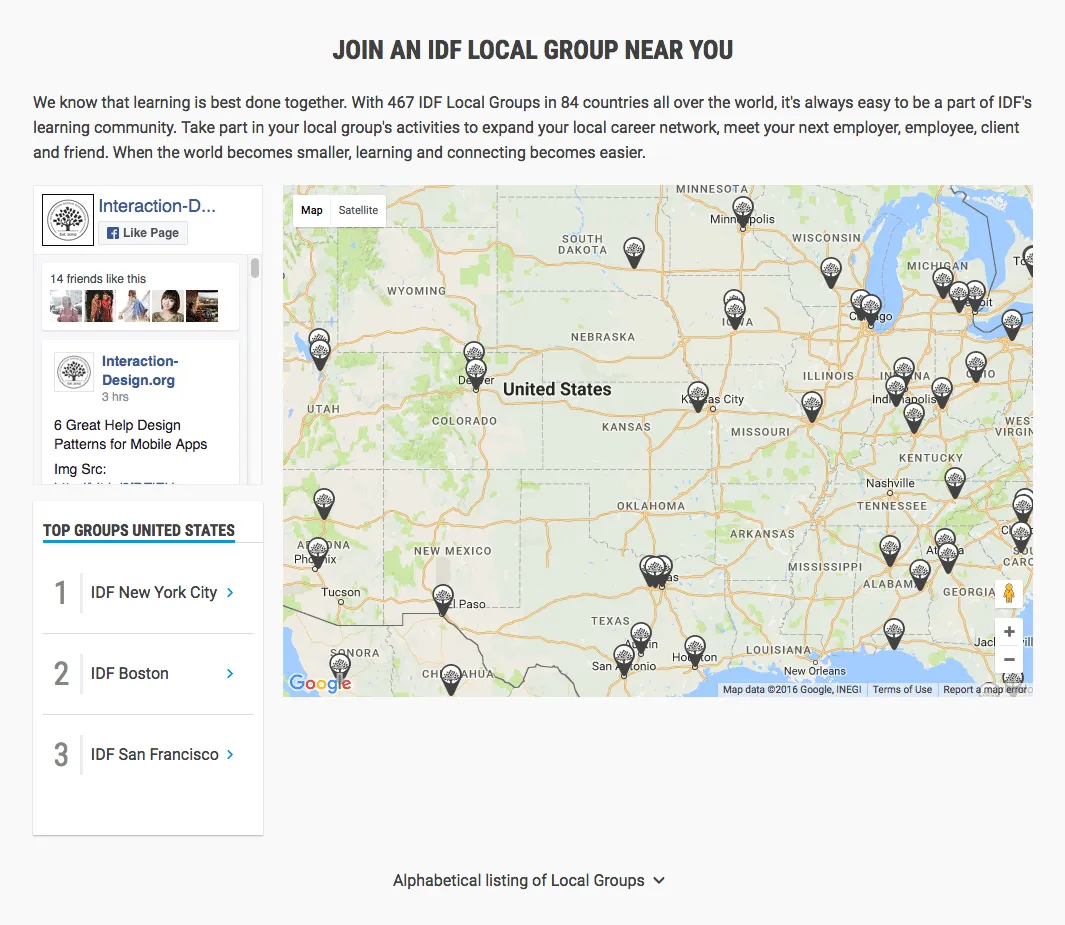
To earn a certificate of completion, you need to score at least 70% on all the questions in the course.

While I’m still far from completing the course, first impressions are that it’s well-structured and comfortably paced. In a few weeks time, I could probably finish the course by chipping away at it for 15-30 minutes per day. Because each sub-lesson is bite-sized, you also feel a small sense of accomplishment even if you just spent a few minutes on the material. From a design standpoint, the progress bar at the top helps to incentivize you to spend just a bit more time per day.
If you’re interested in checking them out further, feel free to browse their full course catalog and join at a 25% discount (for the first year).


